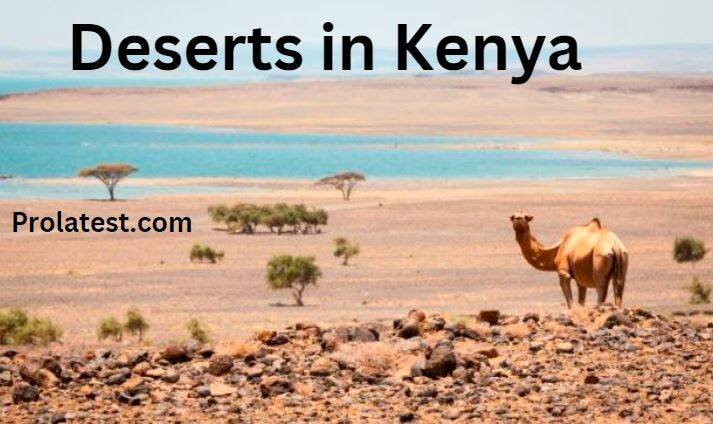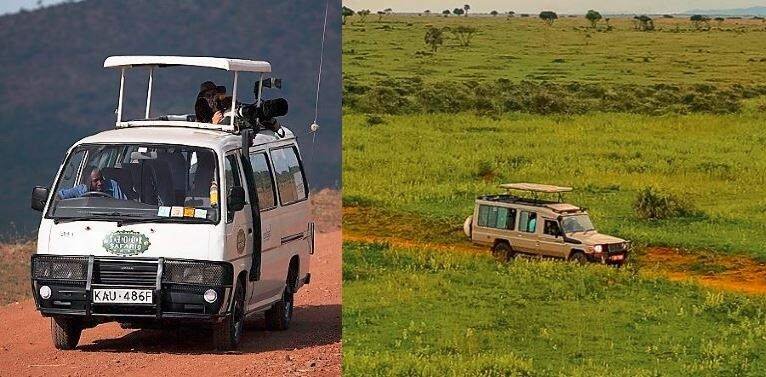Deserts in Kenya are gradually becoming the best tourist destinations. Although they have scarce resources to support life, these deserts have the same spectacular physical features you find in Middle East Asia.
In your desert safari in Kenya, you will encounter rugged terrains with sand dunes, barren soils, camels, wild animals, and local pastoralists. Before you plan your next road trip, here is a list of deserts in Kenya. Check the list to learn where to find Kenya’s four deserts.
What Are the Four Deserts in Kenya?
Before you fly to Dubai to see a desert, take the time to explore our local options. The following are the four deserts in Kenya, including their locations and tourist landmarks:
1. Chalbi Desert (Huri Hills)
The most recognized desert in Kenya is the Chalbi Desert or Huri Hills. The Chalbi Desert is within Marsabit County, where the Gabbra Pastoralist community lives. The Chalbi Desert is near the southern border of Kenya and Ethiopia.
It stretches from Mt. Marsabit to Lake Turkana across the northern part of the country. Chalbi, which means bare and salty in the local slang, is about 100,000 square kilometers big. The desert area rises 370m above the sea level.
The Chalbi Desert is the hottest area in Kenya. Its temperatures can often go over 36 degrees Celsius in February. It is also one of the coldest places around July, as temperatures can drop to 18 degrees Celsius. The Chalbi Desert terrain meets all the characteristics of a true desert.
Like the Middle East deserts, Chalbi is scorching hot during the day and ice-cold at night. Chalbi is number one in our list of deserts in Kenya because most tourists like it. Discover the features that attract the tourists below:
- Scenic Landscapes – The sprawling Chalbi Desert is on an area that previously hosted a lake. This lake formed when Mount. Marsabit was an active volcano. The area became a desert when the lake dried up. Mount Marsabit is the most prominent mountain in the Chalbi Desert. The Chalbi Desert is a rocky plain with coarse sand, small thickets, scattered acacia trees, ash-grey rock formations, sand dunes, and groups of small huts. The Huri Hills rise from the desert on the northern part, and you can see a kilometer-long sand dunes stretching away from their foot.
- Wildlife – The Chalbi Desert hosts various animal species, including antelopes and zebras. It also hosts birds like Kori bustards and ostriches. Since Chalbi is close to Marsabit National Park, you can get inside and view the game. The park accommodates elephants, leopards, and buffalos. Apart from viewing wildlife, you can trek and enjoy the striking surroundings.
- Cultural Experience – The Chalbi Desert is too harsh to support dense human settlements. The few people who live here are pastoralists. The Gabbras occupy most of the region but you can also meet the Rendille and Ormo people. These Cushitic people have unique traditions and habits they can teach you during your visit. They are the most resilient tribes in Kenya since they know how to survive in the harsh, stormy desert. During cultural festivities, you can learn a lot about their ways of life, including cuisines, fashion accessories, traditional dances, art and games, etc.
- Salt Pans – The extensive Chalbi Desert landscape has countless salt pans. These wonders of nature emit an orange glow at sunset. The stunning salt pans are not only tourist landmarks. They are also an asset for the locals. Their cows enjoy licking these natural salt pans all day. Moreover, the Rendille people harvest salt from these pans and sell it to make money.
- The Kalacha Oasis – Although the Chalbi Desert is extremely dry, it boasts the life-saving Kalacha Oasis. Kalacha is the only place where people and animals can quench their thirst. The Kalacha Oasis is at the northern tip of the Chalbi Desert.
- Tourist Fun Activities – Since the Chalbi Desert is getting popular, tourists have a few fun activities to try. These include desert motorsports, kiteboarding, camelback rides, trekking, and photography.
If traveling to Chalbi Desert from Nairobi, you will spend seven to eight hours on the road. Since you will drive through the Nanyuki route, you will capture the timeless beauty of Mount Kenya.
Other landmarks you will see on your way to the Chalbi Desert are Mt. Ololokwe, Moile Hills, Ewaso Nyiro River, and the beautiful wheat and canola plantations of Timau. Ensure you visit the Chalbi Desert between January and February or July and October.
Also Read: The Bora Bora Wildlife Park: Location, Entrance Fee, And Charges
2. Nyiri Desert (Nyika or Taru Desert)
Nyiri Desert is the biggest Kenyan desert. Also called Nyika or Tara Desert, Nyiri lies eighty kilometers east of Lake Magadi. It then expands to the southern border of Kenya and Tanzania. Nyiri Desert is so expansive that it encloses the entire Amboseli National Park.
Its southern part meets the Tsavo West National Park while the northern one meets the Nairobi National Park. Nyiri Desert has typical desert features like sand dunes, spaced-out acacia trees, greyish-green creeping plants, rocky outcrops, and poisonous thorny bushes.
Nyiri Desert does not get many tourists like the Chalbi Desert, yet it has a lot to offer them. Nyiri Desert’s tourist landmarks include:
- Taru Sandstone Formations – The most unique landmark in the Nyika Desert is the Taru sandstone formations. These towering physical features are thirty meters tall and have stood here for millions of years. Taru sandstone formations are some of the loveliest features in the Nyiri desert.
- Cultural Adventures – The occupants of Nyika Desert are people from Kajiado County. They are mainly the Maasai, recognized for their Masaai Morans and unique cultures.
- Tsavo National Park – When touring Nyiri Desert, you can spend a day in Tsavo West National Park and see wild animals like elephants, zebras, lions, hyenas, gerenuks, etc. You can also arrange excursions to Amboseli National Park, the wildlife facility with the largest elephant herds.
- Mt. Kilimanjaro – Nyiri Desert provides blue views of Mt. Kilimanjaro, which rests on the Tanzanian side. The big volcano is one of the things that make Nyika Desert’s scenery so breathtaking. Being on the leeward side of the mountain, Nyiri receives occasional rains throughout the year. The vegetation becomes lush and beautiful during the rainy season and immediately turns bare and barren when the rains stop. Nyiri has tall baobab trees that may have existed here for 2000 years.
Find Out: Amazing Caves In Kenya: Must Visit Caves
3. Mambrui Desert
The Mambrui Desert is located on the Kenyan Coast. It is in the Malindi sub-county, Kilifi County. Mambrui Desert features the famous Kola Beach (Golden Beach), known for its undulating sand dunes and serenity.
Unlike the Chalbi and Nyiri deserts, Mambrui has a reliable water source called the Sabaki River. The desert’s vegetation cover includes acacia, palm, and baobab trees and tones of pristine white sandy soil.
The Mambrui Desert is an enthralling tourist destination for those looking to enjoy water sports in the Indian Ocean. It offers the following tourist landmarks:
- Beach Activities – The Mambrui Desert hosts one of the most famous beaches on the North Coast. You will like this desert beach if you enjoy swimming, sunbathing, diving, snorkeling, etc.
- Wildlife Viewing – The Mambrui Desert ecosystem supports a few wild animals. These include cheetahs and leopards. The Sabaki River ends in the Indian Ocean and hosts animals like crocodiles and hippopotamuses.
- Gedi Ruins – The most popular historical monuments in Kilifi County are Gedi Ruins. Although they are not within the Mambrui deserts, they are easy to access from there. Gedi Ruins reminds us of an ancient, 13th-century Islamic town that was a crucial trading location until the settlers abandoned it in the 17th century.
- Hiking Trails – When you arrive in Mambrui Desert, you can choose to transverse the expansive area by foot. Alternatively, you can pay to ride on a camel’s back.
- Cultural Diversity – Mambrui Desert is near Malindi, Watamu, and various settlements in Kilifi County. Visiting these towns is important if you want to learn something about the Swahili traditions and cultures. The Giriama, Digo, Chonyi, and other mijikenda sub-tribes have valuable lessons to teach you.
4. Kaisut Desert
The Kaisut Desert is the smallest and least known Kenyan desert. Like the Chalbi Desert, the Kaisut Desert occupies the northern part of Kenya. It is on the Lake Turkana side near the Sudanese border with Kenya.
Kaisut Desert is an expansive land with rocks, thorny groves, sand dunes, and dry riverbeds. Due to its rugged terrain, the hot desert is perfect for tourists who love to trek and climb rocks. Here are things to do in Kaisut Desert:
- Wildlife Viewing – Some wild animals endure the harshness of this desert. These include Grevy’s zebra, lesser Kudu, and gerenuk. You can watch them during your trip.
- Cultural tours – Kaisut Desert’s occupants are the Turkana community. The Turkana are pastoralists who domestic cattle. They are quite hospitable and easy to socialize with. If you want to learn their way of life, a tour of the Kaisut Desert provides an instant opportunity.






